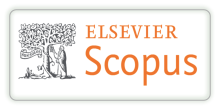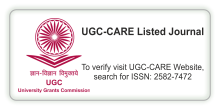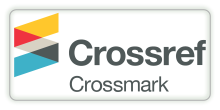EFFECT OF YOGIC INTERVENTION ON WAIST CIRCUMFERENCE AND GLYCEMIC CONTROL AMONG PREDIABETIC YOUNG ADULTS: A RANDOMIZED CONTROLLED STUDY
DOI:
https://doi.org/10.29121/shodhkosh.v5.i1.2024.6514Keywords:
Diabetes Mellitus, Hba1c, Yoga, Obesity, AdultsAbstract [English]
Yoga therapy is well known therapy for prediabetics, (Prevention of Type- 2 Diabetes Mellitus ie.T2DM)) which is safe, effective, and easy-to-learn. It can be practiced by adolescents, young adults, elderly and also persons with disabilities.
Aim: Effect of 6 months of yoga therapy on glycemic control among abdominal obesity diagnosed prediabetic young adults: A randomized controlled study.
Settings and Design: The study is conducted at Swasthya Kalyan Group of InstitutionsS, Jaipur for 6 months.
Materials and Methods: A total of 105 students, diagnosed as abdominal obesity, were selected and registered for the study from Swasthya Kalyan Group of Institutions, Jaipur as participants who were divided into interventional and control groups by computer-generated, randomized number sequence method. The yogic practice was advised to 52 study participants and the remaining 53 participants were advised not to do any exercise or yoga for 6 months. The glycemic outcome was evaluated by HbA1c which was examined at baseline, and at the end of 6 months.
Statistical Analysis Used: Paired t-test. Generalized estimating equations models were performed on the glycemic control variables to assess the differences between the intervention and control groups.
Results: The post-test analysis of 105 abdominal obesity diagnosed pre-diabetic adults's data inferred that the Intervention group has shown statistically significant (P < 0.05) effect on reducing HbA1C. However, no statistically significant difference (P > 0.05) was observed when the Intervention group was compared with the control group on glycemic control (reducing HbA1c).
Actually, yoga is an effective alternative method, hence people with morbidities or who are unable to go for exercise can practice yoga at home which will help them for preventing the level of HbA1c and risk of Type II diabetes.
References
American Diabetes Association. (2020). Prevention or delay of type 2 diabetes: Standards of medical care in diabetes—2020. Diabetes Care, 43(Suppl 1), S32-S36. DOI: https://doi.org/10.2337/dc20-S003
Després, J. P. (2012). Body fat distribution and risk of cardiovascular disease: An update. DOI: https://doi.org/10.1161/CIRCULATIONAHA.111.067264
Circulation, 126(10), 1301-1313.
Fauci, A. S., Kasper, D. S., Longo, D. L., Braunwald, E., Hauser, S. L., & Jameson, J. L. (2015). Harrison’s principles of internal medicine (19th ed.). New Delhi: McGraw Hill.
Bijlani, R., Vempa, Sapra, A., & Bhandari, P. (2023). Diabetes. In StatPearls [Internet]. StatPearls Publishing. https://www.ncbi.nlm.nih.gov/books/NBK551501/ (Accessed 18.05.2023).
Alvin, C. P. (2018). Diabetes mellitus. In J. Loscalzo, A. Fauci, D. Kasper, S. Hauser, D. Longo, L. Jameson (Eds.), Harrison's principles of internal medicine (21st ed., pp. 2152- 2180). New York: McGraw-Hill.
Sarkar, A., Dash, S., Barik, B. K., Muttigi, K. V., Shetty, J. K., & Kedage, V. (2010). Copper and ceruloplasmin levels in relation to total thiols and GST in type 2 diabetes mellitus patients. Indian Journal of Clinical Biochemistry, 25(1), 74-76. DOI: https://doi.org/10.1007/s12291-010-0015-0
Huizinga, M. M., & Rothman, R. L. (2006). Addressing the diabetes pandemic: A comprehensive approach. Indian Journal of Medical Research, 124(4), 481-484.
Mohan, V., Sandeep, S., Deepa, R., Shah, B., & Varghese, C. (2007). Epidemiology of type 2 diabetes: Indian scenario. Indian Journal of Medical Research, 125(3), 217-230.
Wild, S., Roglic, G., Green, A., Sicree, R., & King, H. (2004). Global prevalence of diabetes: Estimates for the year 2000 and projections for 2030. Diabetes Care, 27(5), 1047-1053.
Ogurtsova, K., da Rocha Fernandes, J. D., Huang, Y., Linnenkamp, U., Guariguata, L., Cho, N. H., et al. (2017). IDF Diabetes Atlas: Global estimates for the prevalence of diabetes for 2015 and 2040. Diabetes Research and Clinical Practice, 128, 40-50. DOI: https://doi.org/10.1016/j.diabres.2017.03.024
Omran, A. R. (2005). The epidemiologic transition: A theory of the epidemiology of population change (1971). Milbank Quarterly, 83(4), 731-757. DOI: https://doi.org/10.1111/j.1468-0009.2005.00398.x
World Health Organization. (2006). Definition and diagnosis of diabetes mellitus and intermediate hyperglycemia: Report of a WHO/IDF Consultation. WHO Publications. https://www.who.int/entity/diabetes/publications/definitions-diagnosis-diabetes_new.pdf (Accessed 18.08.2018).
Zimmet, P. Z. (1991). Challenges in diabetes epidemiology: From West to the rest.
Diabetes Care, 15(2), 232-252.
Dowse, G. K., Gareeboo, H., Zimmet, P. Z., Alberti, K. G., Tuomilehto, J., Fareed, D., et al. (1990). High prevalence of NIDDM and impaired glucose tolerance in Indian, Creole, and Chinese Mauritians. Diabetes, 39(3), 390-396. DOI: https://doi.org/10.2337/diabetes.39.3.390
Zimmet, P., Taylor, R., Ram, P., King, H., Sloman, G., Raper, L. R., et al. (1983). Prevalence of diabetes and impaired glucose tolerance in the biracial (Melanesian and Indian) population of Fiji: A rural–urban comparison. American Journal of Epidemiology, 118(5), 673-688. DOI: https://doi.org/10.1093/oxfordjournals.aje.a113678
Unnikrishnan, R., Anjana, R. M., & Mohan, V. (2016). Diabetes mellitus and its complications in India. Nature Reviews Endocrinology, 12(6), 357-370. DOI: https://doi.org/10.1038/nrendo.2016.53
Unnikrishnan, R., Anjana, R. M., & Mohan, V. (2014). Diabetes in South Asians: Is the phenotype different? Diabetes, 63(1), 53-55. DOI: https://doi.org/10.2337/db13-1592
International Diabetes Federation. (2015). IDF Diabetes Atlas (7th ed.). Brussels: International Diabetes Federation.
Koda-Kimble, M. A., & Carlisle, B. A. (1995). Diabetes mellitus. In L. Y. Young, M. A. Koda-Kimble, W. A. Kradjan, & B. J. Guglielmo (Eds.), Applied therapeutics: The clinical use of drugs (6th ed., pp. 481-485). Vancouver: Applied Therapeutics.
Kurt, H., & Demirkiran, D. (2016). Changing of hemoglobin A1c affects mean platelet volume in type-2 diabetes mellitus. Ulutas Medical Journal, 2(1), 27-35. DOI: https://doi.org/10.5455/umj.20160211122820
Herman, W. H., & Fajans, S. S. (2010). Hemoglobin A1c for the diagnosis of diabetes: Practical considerations. Polskie Archiwum Medycyny Wewnętrznej, 120(1-2), 37-40. DOI: https://doi.org/10.20452/pamw.877
Ismail-Beigi, F., Craven, T., Banerji, M. A., Basile, J., Calles, J., Cohen, R. M., et al. (2010). Effect of intensive treatment of hyperglycemia on microvascular outcomes in type 2 diabetes: An analysis of the ACCORD randomized trial. Lancet, 376(9739), 419-430. DOI: https://doi.org/10.1016/S0140-6736(10)60576-4
Wild, S., Roglic, G., Green, A., Sicree, R., & King, H. (2004). Global prevalence of diabetes: Estimates for the year 2000 and projections for 2030. Diabetes Care, 27(5), 1047–1053. https://doi.org/10.2337/diacare.27.5.1047 DOI: https://doi.org/10.2337/diacare.27.5.1047
Alberti, G., Zimmet, P., Shaw, J., Bloomgarden, Z., Kaufman, F., & Silink, M. (2004). Type 2 diabetes in the young: The evolving epidemic: The International Diabetes Federation Consensus Workshop. Diabetes Care, 27(7), 1798–1811. https://doi.org/10.2337/diacare.27.7.1798 DOI: https://doi.org/10.2337/diacare.27.7.1798
Thomas, N., Grunnet, L. G., Poulsen, P., Christopher, S., Spurgeon, R., & Inbakumari, M., et al. (2012). Born with low birth weight in rural Southern India: What are the metabolic consequences 20 years later? European Journal of Endocrinology, 166(4), 647–655. https://doi.org/10.1530/EJE-11-0916 DOI: https://doi.org/10.1530/EJE-11-0870
Chapla, A., Mruthyunjaya, M. D., Asha, H. S., Varghese, D., Varshney, M., & Vasan, S. K., et al. (2015). Maturity onset diabetes of the young in India - A distinctive mutation pattern identified through targeted next-generation sequencing. Clinical Endocrinology, 82(4), 533–542. https://doi.org/10.1111/cen.12692 DOI: https://doi.org/10.1111/cen.12541
Guilherme, A., Virbasius, J. V., Puri, V., & Czech, M. P. (2008). Adipocyte dysfunctions linking obesity to insulin resistance and type 2 diabetes. Nature Reviews Molecular Cell Biology, 9(5), 367–377. https://doi.org/10.1038/nrm2391. DOI: https://doi.org/10.1038/nrm2391
Sahay, B. K. (2007). Role of yoga in diabetes. Journal of the Association of Physicians of India, 55, 121-126.
Downloads
Published
How to Cite
Issue
Section
License
Copyright (c) 2024 Ankesh Singh Bhadoria, Dr. Riya Dwivedi

This work is licensed under a Creative Commons Attribution 4.0 International License.
With the licence CC-BY, authors retain the copyright, allowing anyone to download, reuse, re-print, modify, distribute, and/or copy their contribution. The work must be properly attributed to its author.
It is not necessary to ask for further permission from the author or journal board.
This journal provides immediate open access to its content on the principle that making research freely available to the public supports a greater global exchange of knowledge.































